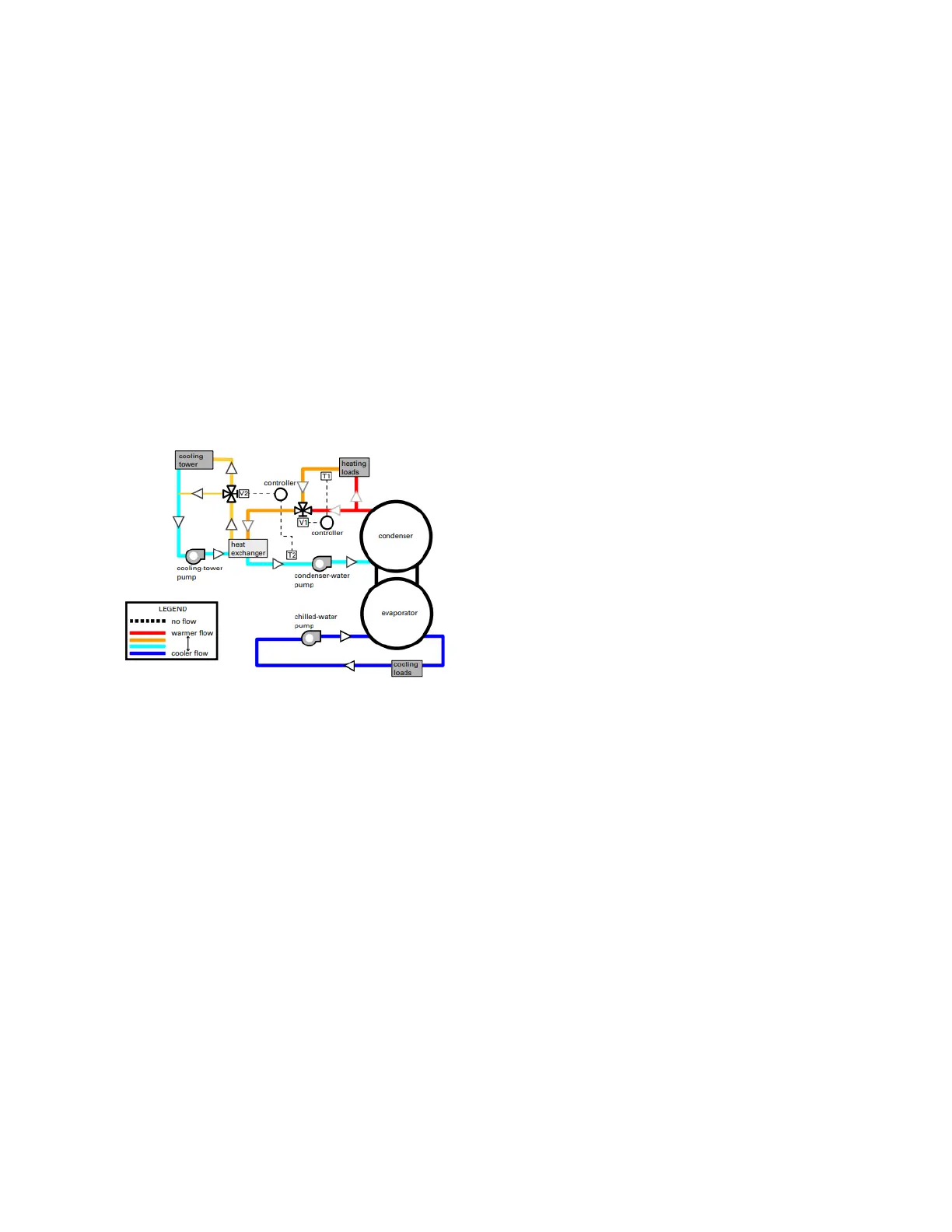Jetson
www.JetsonHVAC.com
40
heat from the condenser that would otherwise
be wasted.
The use of heat recovery should be considered
in any building with simultaneous heating and
cooling requirements or in facilities where heat
can be stored and used at a later time. Buildings
with high year-round internal cooling loads are
excellent opportunities for heat recovery. Heat
recovery can be accomplished with the FWCD
Series by recovering heat from the water
leaving the standard condenser and using it in
conjunction with a third-party heat exchanger
as shown in Figure 13 - Heat Recovery.
Figure 13 - Heat Recovery
Heat recovery is designed to capture a portion
of the heat that is normally rejected to the
cooling tower and put it to beneficial use. With
the addition of a heat recovery cycle, heat
removed from the building cooling load can be
transferred to any heating application. The heat
recovery cycle is only possible if a cooling
load exists to act as a heat source.
The FWCD Series chiller uses smart control
logic to switch the control point between the
cooling set point and heating set point, based
on the smaller of the loads. This allows the
machine to operate in heat recovery mode
longer - maximizing the energy saved. In the
heat recovery cycle, the unit can control to a
hot water set point. During the heat recovery
cycle, the unit operates just as it does in the
cooling-only mode except that the leaving hot
water is the control point instead of the leaving
chilled water. Water circulated through the
heat recovery heat exchanger (condenser)
absorbs cooling load heat from the compressed
refrigerant gas discharged by the compressors.
The heated water is then used to satisfy heating
requirements.
Hospitals, dormitories, computer centers, and
hotels are opportunities for economical heat
recovery due to their needs for hot water for
reheat and domestic use, coupled with air-side
economizer operation, or in some cases, winter
operation of chillers. Heat recovery provides
hot water and tight control that minimizes
operating costs for the chilled water plant and
boiler/hot water heater, while also providing
consistent dehumidification. The heat recovery
heat exchanger cannot operate alone without a
load on the chiller.
Units with a brazed plate heat recovery heat
exchanger can produce up to 140°F leaving
water temperature and units with the shell and
tube heat recovery heat exchanger can produce
up to 125°F leaving temperature.
Fluid Volume
Consideration must be given to the total
volume of fluid in the system. In close coupled,
low volume systems, the leaving fluid
temperature will change quickly with steps of
capacity control. This is not acceptable if close
control is desired for a conditioned space or an
industrial process. In order to accurately
determine the fluid volume needed for the
application, you must resolve and agree on the
amount of swing in fluid temperature that can
be tolerated. This will depend on the control
system, the terminal equipment operation, and
use. For applications utilizing constant flow
evaporators, 25% of the design load is the
minimum array turndown allowed. If further
turndown is required, the system must have
